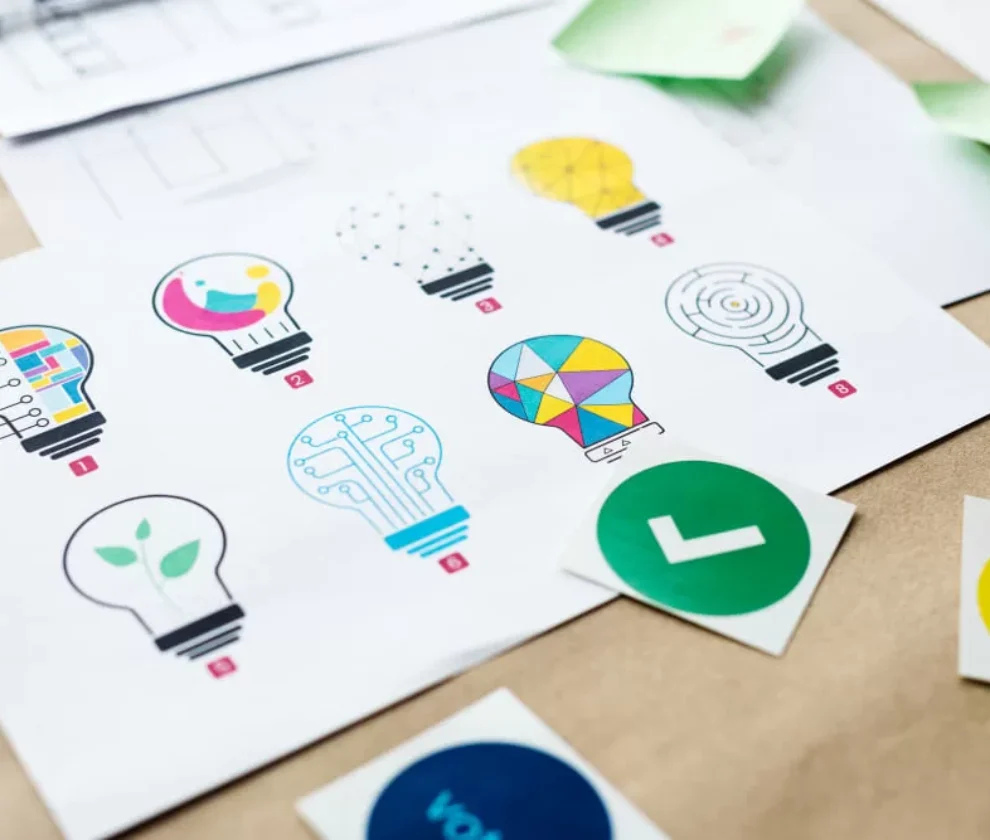Today, significant pressures are driving developments in sustainable technology. Governmental pressure, growing consumer demand for environmentally sound goods, and a flood of new funds into climate technology all play a part. After doubling in value in just two years, the climate tech start-up ecosystem in Europe is now worth over $100 billion. BlackRock CEO Larry Fink believes the next 1,000 billion dollar unicorns will emerge in the field of climate technology.
As a result of technological advancements, sustainability is becoming a more important factor in all sectors. Here, we zero in on innovations with the potential to significantly impact the long-term viability of seven different industries: advanced manufacturing services (AMS), automotive, retail, banking, energy, healthcare, and consumer products. This is based on our work at the Bain Innovation Exchange with corporate clients across industries, connecting with hundreds of start-ups focused on this topic, and ongoing conversations with venture capitalists and other investors.
Each highlighted climate tech and green breakthrough has the potential to disrupt many industries because of the interconnected nature of all markets. We’ve zeroed in on the companies that are making waves right now, as well as the newcomers whose methods have the potential to completely revolutionize a specific industry.
Larger and more complicated AMS projects can be investigated and advanced with the use of 3-D printing.
Data from the International Energy Agency shows that 37% of all CO2 emissions are caused by the construction industry. The latest developments in 3-D printing have the potential to minimize natural resource usage and waste in the sector by printing new materials, such as cement and metals, and by printing larger items. Building with 3-D printing is not only more efficient but also more precise, especially when the object being built is intricate or one-of-a-kind.
In economically depressed and underprivileged regions, Alquist uses 3-D printing to reduce the cost of constructing sustainable single-family, multifamily, mixed-use, and senior-living houses. Alquist saves up to 15% off the normal cost of building a home using wood by using 3-D printed concrete. This summer, the business will begin building on the world’s largest 3-D construction project: 200 3-D printed homes in southwestern Virginia, to be built over the course of many years.
Due to the ever-changing nature of the value chain, retail efficiency is more important than ever, and AI allows for more precise monitoring and reduction of scope 3 emissions.
For example, 95 percent of retail emissions come from scope 3 indirect emissions in the supply chain, making retailing a top sector emitter. Although the retailer has some control over the emissions from the sources in their “scope 1” and “scope 2” categories (direct emissions from company-owned sources and purchased power and heating/cooling, respectively), managing emissions from their “scope 3” system is more difficult. Artificial intelligence (AI) and other technologies can be used to track the system’s carbon footprint, predict future emissions, and cut them through more efficient internal and external workings.
Sweep has developed a carbon emission management software that enables merchants to track, predict, and cut scope 3 emissions across their whole value chain. As demand in this kind of nuanced carbon accounting grows, the company was able to raise $73 million in April of 2022.
Financial institutions are continually developing innovative approaches to generating sustainable value, such as the introduction of environmentally friendly and socially beneficial products and services.
With the advent of fintech, banks now realize they must compete with those who grew up with computers. Although banks’ direct impacts on the environment may be minimal, the loan portfolios and product offers they provide have a significant impact on how businesses and people behave, invest, and resolve their impacts. The market for environmentally friendly products is expanding rapidly, and with the larger green transition predicted to cost $125 trillion, lenders have a massive potential to capitalize on this trend. More and more, regulators are demanding that financial institutions quantify and report on their environmental effects, a process that can be complicated by a lack of readily available, high-quality portfolio data and standardized methods of assessment.
Well-known financial institutions are supporting decarbonization initiatives and providing emission reduction services. Green investment techniques, transaction-based carbon offsetting, and the transfer of earnings to compensatory initiatives are just a few examples of how new businesses are focusing on sustainability. Aspiration is a company with over 6 million consumers that aims to help them to get carbon neutral. Carbon reduction measures, such as offsetting a purchase’s carbon footprint, are included in its debit and credit cards. Organizational clients get access to carbon footprint tracking tools and a comprehensive database of carbon reduction resources. The company began operations in 2015 and raised $315 million in further equity funding in December 2021.
To overhaul their whole portfolios, energy businesses must now invest beyond carbon.
According to the World Resources Institute’s ClimateWatch, energy production is responsible for more than 70% of “man-made” greenhouse gas emissions. Leading energy businesses are reinventing and diversifying in response to increasing government interventions, incentives, and subsidies, as well as to shifting expectations among customers, investors, and employees. Although digitalization is opening up new possibilities for collaboration and creative business models, enterprises still need to strike a balance between a number of important concerns, such as the cost of energy, the reliability of the energy supply, and the potential profitability of any investments.
Companies like Google and General Electric have established corporate venture capital funds to invest in cutting-edge energy research. Between January 2020 and August 2021, climate technology businesses received almost $40 billion in venture funding, an increase of about 40% over the previous two-year period, as reported by PitchBook.
H2GO Power, a spinoff from the University of Cambridge, has created a reactor that stores hydrogen in a solid state and releases it on demand. This makes it a zero-emission, safe, and reliable alternative to lithium batteries. Units the size of shipping containers collect renewable energy, store it as hydrogen, and then release it when needed. Algorithms developed by AI enable effective management at a low cost.
The healthcare business in the United States is recognizing the importance of supporting the circular economy.
Seventy-five percent of all plastic ever made is now considered garbage, and the manufacturing process produces a lot of carbon dioxide. The healthcare industry is responsible for a sizeable amount of global plastic waste, much of it is related to essential medical supplies and procedures. The World Health Organization (WHO) has recently estimated that the critical products needed to manage a global pandemic have included 87,000 metric tonnes of personal protective equipment, 144,000 metric tonnes of syringes, needles, and other vaccine waste, and chemical and plastic waste from more than 140 million test kits.
The difficulty lies in minimizing waste without compromising the quality of service. Circular economy principles may call for a shift toward the usage of medical gadgets that are built for reuse and intended to be used for as long as possible after initial use. Expendables ought to be made from materials that can be broken down naturally in landfills. Seaweed and other plants are used in the production of biodegradable packaging by Notpla. The firm has apparently generated over $12 million to date and provides equipment and supplies to help businesses package their products in the most environmentally friendly way possible. Positively demonstrating the rapidity of the invention in times of global disruption, the industrial design firm Morrama very recently designed a prototype for what might be the world’s first entirely recyclable and biodegradable Covid-19 test.
Vertical farming and lab-grown meat are at the forefront of ESG expansion because they represent the future of food production and consumption.
As a result of the global food system, 7.9 billion people are fed and one-third of the world’s GDP is produced. On the other hand, it has a significant negative impact on the environment by accounting for almost a quarter of all greenhouse gas emissions and adding to the rate of deforestation and extinction of species. Using less water and land to grow the same or more food is possible with the help of innovative farming and eating practices like vertical farming and lab-grown meat. As a result, fewer resources are expended on chemical fertilizers, pesticides, and long-distance shipping. By using far fewer resources (both energy and water) in the production process, cultured beef has the potential to drastically reduce pollution levels.
The startup ecosystem is developing innovative strategies to take advantage of these openings. In only a few short hours, Air Protein is made by blending airborne components with the company’s cultivated animal proteins. Incorporating culinary expertise, the company is able to transform flour into a product with textures and flavors that are indistinguishable from those of real meat. And, IGS provides vertical farming platforms that regulate environmental conditions for maximum plant and human health.
Because of shifting norms and rising consumer interest, the auto industry is adopting air mobility.
Roughly 80% of the world’s energy is used in cities, and about 1.6 billion tonnes of greenhouse gases are released annually by vehicles on the road, according to the US Department of Energy. Decongesting cities, decreasing noise pollution, and aiding in the decarbonization of the energy sector are all possible with the help of urban air mobility (UAM), which uses drones to move both goods and people. Using electric propulsion and larger batteries in conjunction with vertical takeoff and landing systems makes this a technical possibility. Building on the findings of a 2021 study on societal acceptance of UAM, the European Union Aviation Safety Agency has begun developing its UAM regulatory framework. They estimate that within three to five years, it will have become commonplace in Europe.
Volocopter is an industry trailblazer, having secured $170 million at a valuation of $1.7 billion to build the first ecosystem of air cabs and heavy transport drones. Upon taking over as CEO in 2024, Dirk Hoke, formerly of Airbus Defense and Space, will be responsible for launching the company’s air taxi services in Singapore. There are proposals to run a fleet of 10–20 air taxis from the Seletar Aerospace Park to ferry visitors between Marina Bay and Sentosa.
Transformation of the value chain needs to take place on multiple fronts to keep up with the rapid pace of innovations in sustainability.
As an issue, sustainability is both intricate and dynamic, necessitating regular assessment. These creative approaches are just the beginning, and they may not be without their own environmental costs. In order to arrive at the best, most well-rounded solutions throughout any value chain, a thorough risk assessment is always necessary.
Innovation is happening faster than ever, ESG considerations are becoming standard operating procedures, and keeping tabs on the evolution of the complex ecosystem is crucial. Because of this, we need to keep digging deeper into these issues and learning more about the many facets of innovation strategy, start-up ecosystem participation, VC funding, and business development.



